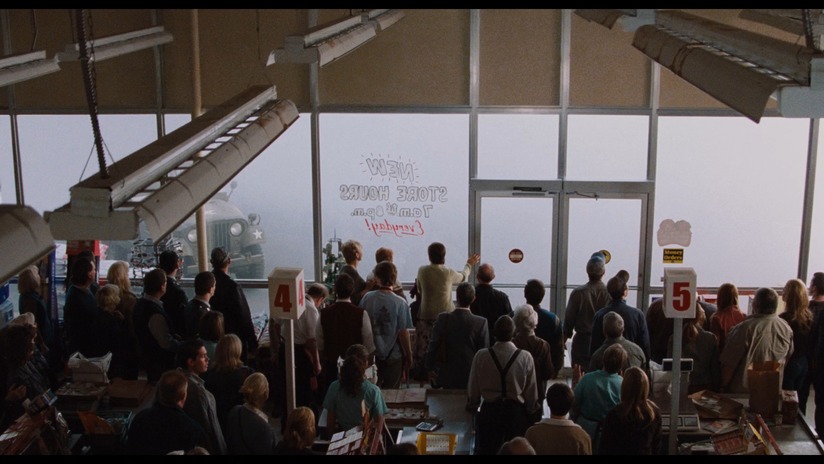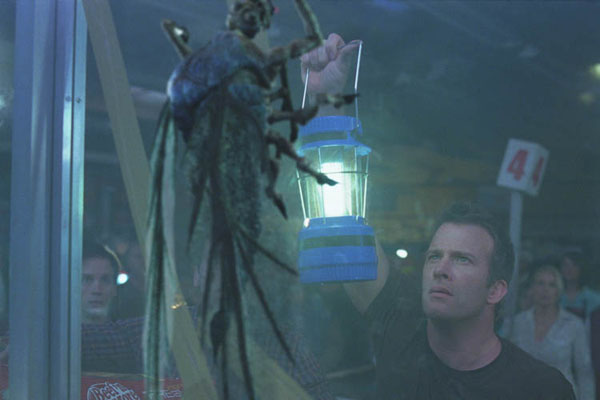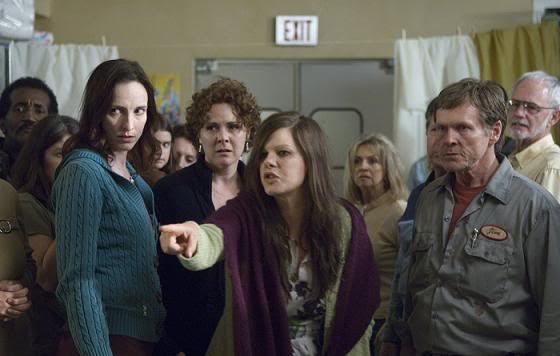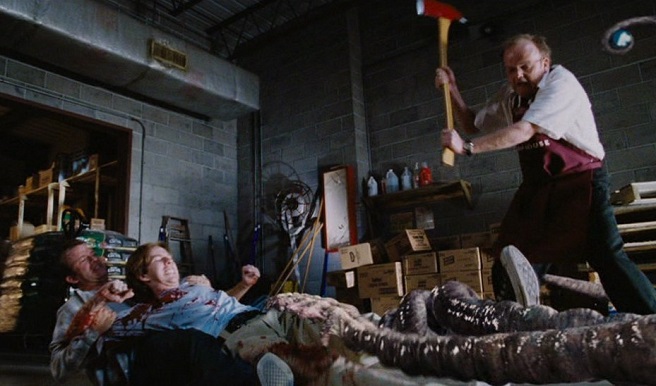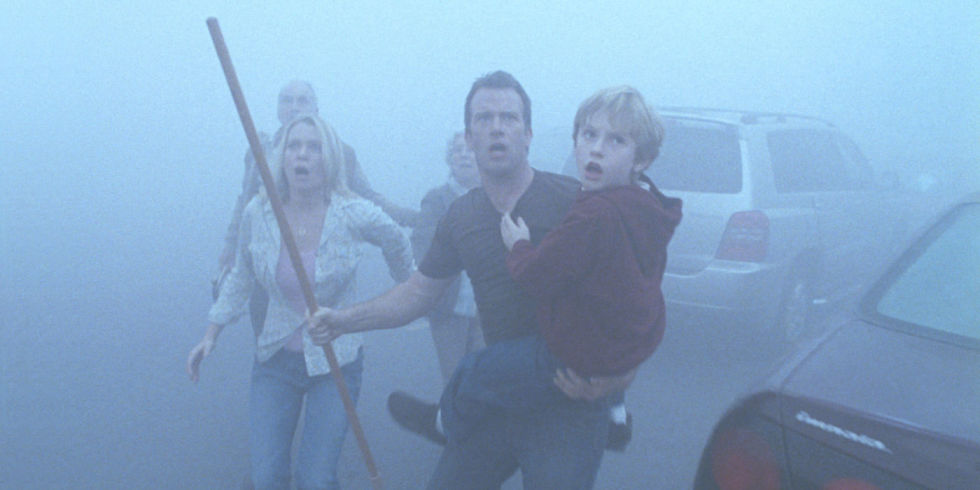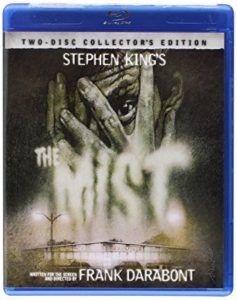#4. Abbott and Costello Meet The Invisible Man (1951)
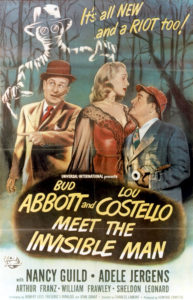 Nature of Shame:
Nature of Shame:
It’s been a loooooong time since I last revisited the Abbott and Costello Meet… movies. I’ll try to remove my nostalgia goggles.
Hooptober Challenge Checklist:
Decade: 1950’s
Abbott and Costello Meet Frankenstein proved to be a hit with my daughters so we carried on. I’d recently watched …Meet the Killer, Boris Karloff so the next logical stop was 1951’s Abbott and Costello Meet the Invisible Man, newly available on The Invisible Man Complete Legacy Blu-ray from Universal.
Abbott and Costello Meet the Invisible Man Elevator Pitch
Boxer Tommy Nelson is accused of killing his manager. In order to evade the law, he takes the invisibility serum and enlists greenhorn gumshoes Bud Alexander and Lou Francis to find the real killer. (Sidenote: Alexander and Francis were Bud and Lou’s middle names.)
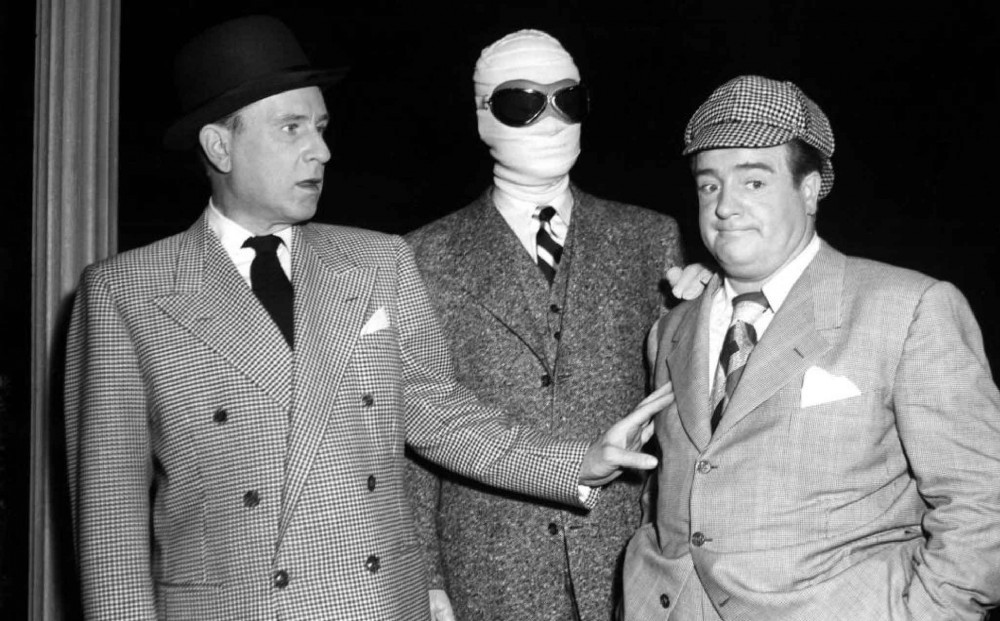
Abbott and Costello Meet the Invisible Man? How would they know?
Universal preceded Abbott and Costello Meet the Invisible Man with five invisible human films between 1933 and 1944. While all existed under the Universal horror umbrella, the Invisible Man films straddled a number of widely varied genres.
The Invisible Man (1933) and The Invisible Man’s Revenge (1944) are more or less nihilistic revenge films. The Invisible Man Returns (1940) skews crime-thriller, and Invisible Agent (1942), as the title suggests, takes the form of a WWII spy film. While all of the Invisible Man films include humor, The Invisible Woman (1940) plays the character for straight comedy.
This of course brings us to Abbott and Costello Meet the Invisible Man in 1951 — a full seven years after the last of the Invisible Man series. Of all the Abbott and Costello Meet… films, this feels the least removed from the Universal series proper. Lou’s stuttering and stammering at the invisible man’s antics and Bud’s skepticism and constant attempts to capitalize on their predicament feel like natural tangents, whereas their injection into the House of Frankenstein/House of Dracula universe felt a little more clumsy.
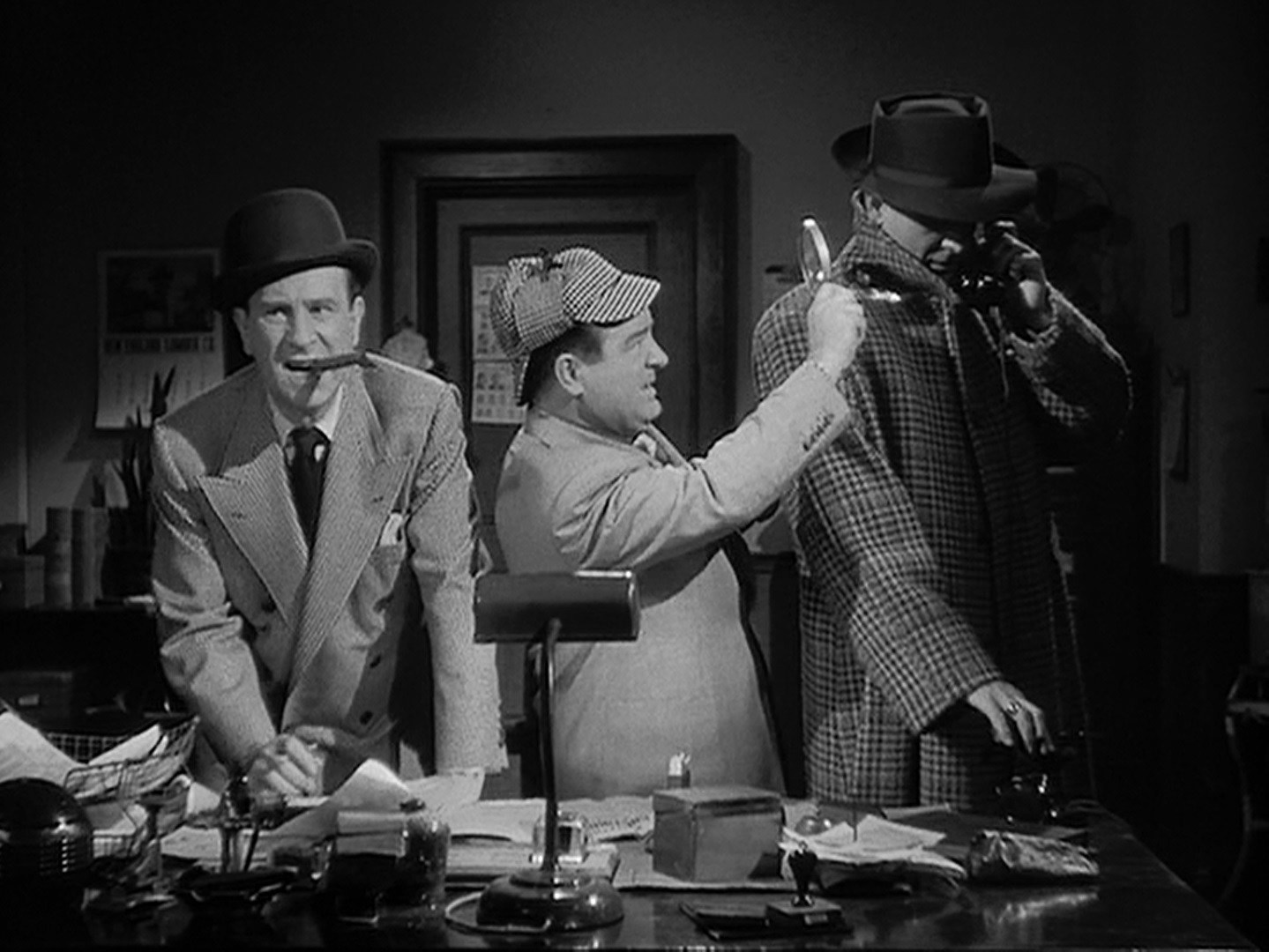
This goes against all commonly held logic, but upon this rewatch I enjoyed Abbott and Costello Meet the Invisible Man more than Meet Frankenstein. The running gags — especially Costello’s feud with the psychiatrist — survive extreme repetition, and the central mystery concerning the bumbling hunt for the murderer feels like a fully-baked narrative. Sure, it wanders over into a sports movie comedy for a spell while Lou fights a professional boxer with the help of the invisible Tommy Nelson. Lou gets every opportunity to display his gifts as a physical comedian.
Invisible Effects
Of course, a conversation about the Invisible Man films wouldn’t be complete without at least a mention of the wizards that created the wonderful visual effects. Even now audiences can see how these effects were indeed “special” — at the time of the Invisible Man’s release they must have blown minds. John P. Fulton, John J. Mescall and Frank D. Williams achieved the illusion of disappearing through the layering of two images — a matte process. They combined the principle photography with Claude Rains in a black suit photographed against a black velvet background.
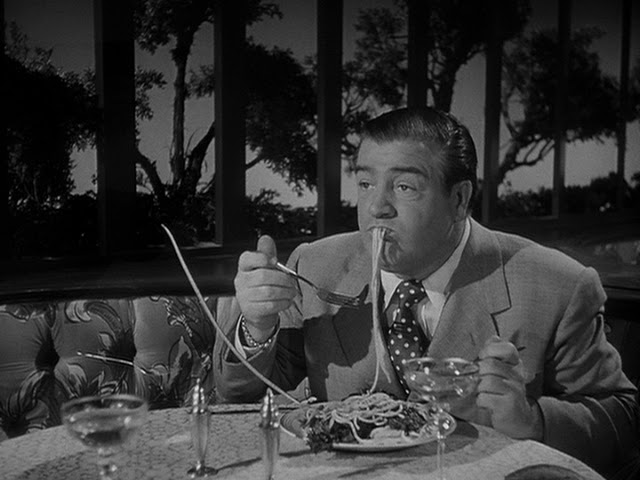
For Abbott and Costello Meet the Invisible Man, Universal used Stanley Horsely, a visual effects technician who worked with John P. Fulton on all but the original Invisible Man. Unfortunately the matte work in Abbott and Costello feels, at times, rather cheaply done compared to the earlier entries. During many scenes, the matte lines were present as was the hazy form of actor Arthur Franz. That’s not to say however that the wonder of the visual trickery has disappeared (see what I did there?) — just that it’s not as seamless and efficient.
Final Abbott and Costello Meets The Invisible Man Thoughts
Due to some nice series callbacks (Claude Rains is featured in a portrait as the creator of the formula) and more or less easy transition into the series, Abbott and Costello make the most of this monster mashup. Most anyone would tell you that the returns on this unholy pairing of the famous comedy duo and the Universal monsters dwindled with each subsequent entry. I’d like to disagree.
The biggest ding against this movie is that it doesn’t carry over thre Vincent Price Invisible Man tease from the end of Meet Frankenstein. Abbott and Costello Meets the Invisible Man maintains the fun and in some ways improves upon the slapdash pacing and narrative of Abbott and Costello Meet Frankenstein. Don’t @ me. I’ve got another Abbott & Costello Meet movie to cover and I won’t be quite as friendly.
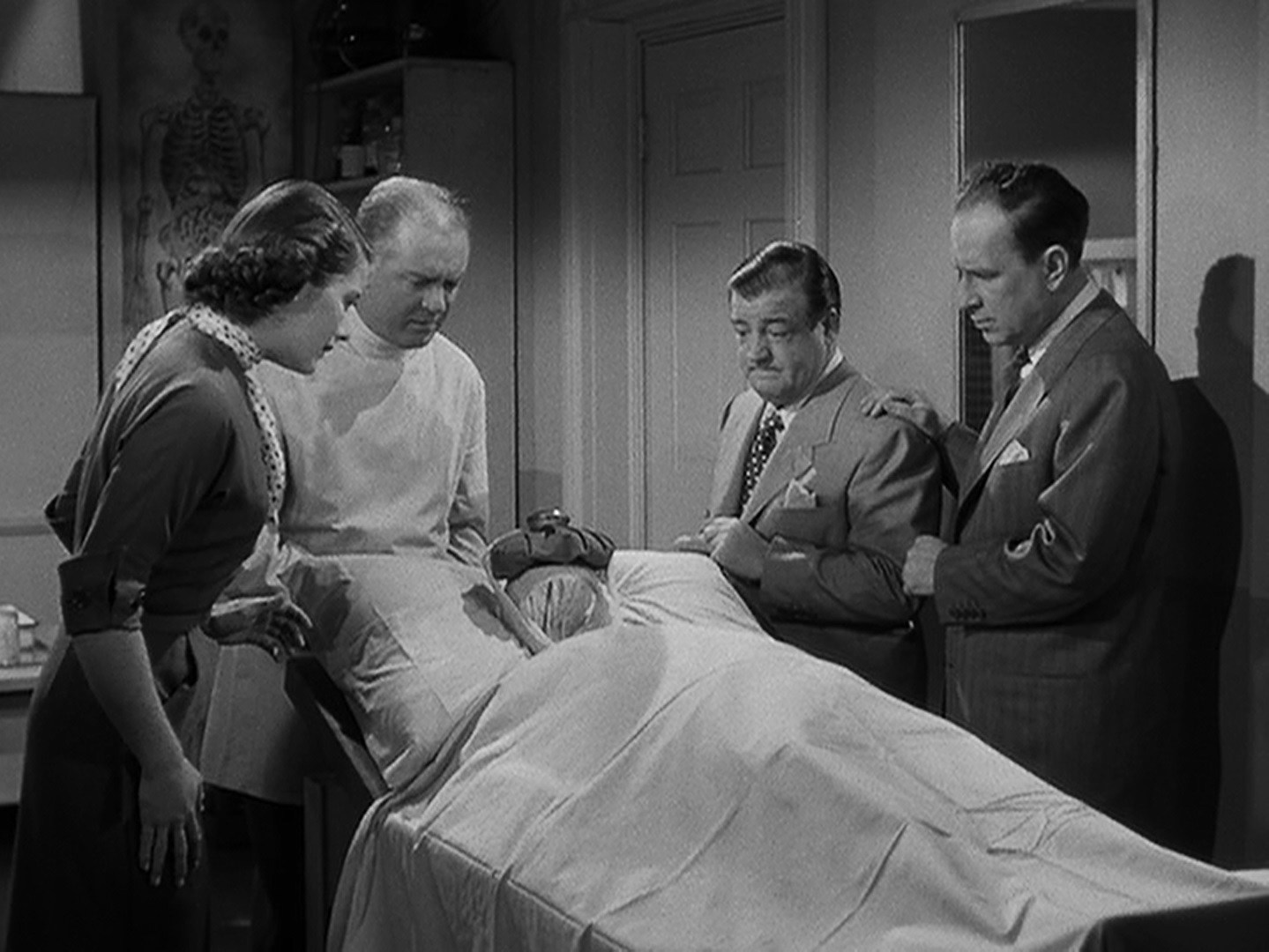
Abbott and Costello Meet the Invisible Man Rating:

Availability:
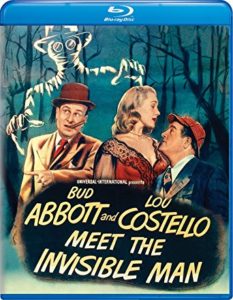 Universal has given you plenty of Abbott and Costello Meet the Invisible Man options. There’s the standalone release — which also included an HD code (bonus). It’s also included on The Invisible Man Complete Legacy Collection.
Universal has given you plenty of Abbott and Costello Meet the Invisible Man options. There’s the standalone release — which also included an HD code (bonus). It’s also included on The Invisible Man Complete Legacy Collection.
If you’d like a complete collection of the Abbott and Costello Meet… movies, that’s more difficult. There’s the brilliant (but OOP) 28-film Abbott and Costello: The Complete Universal Pictures Collection steamer trunk. The Meet the Monsters DVD set contains Meet Dr. Jekyll and Mr Hyde (which is currently not available on Blu-ray), but is missing Abbott & Costello Meet the Killer, Boris Karloff because… I have no idea. In order to get that one, you’d need to purchase The Best of Abbott & Costello, Vol. 3 DVD. Got that?
2018 @CinemaShame / Hooptober Progress
#1. Deep Rising (1998)
#2. The Mist (2007)
#3. Abbott and Costello Meet Frankenstein (1948)
#4. Abbott and Costello Meet the Invisible Man (1955)
James David Patrick is a writer. He’s written just about everything at some point or another. Add this nonsense to the list. Follow his blog at www.thirtyhertzrumble.com and find him on Twitter, Instagram, and Facebook.

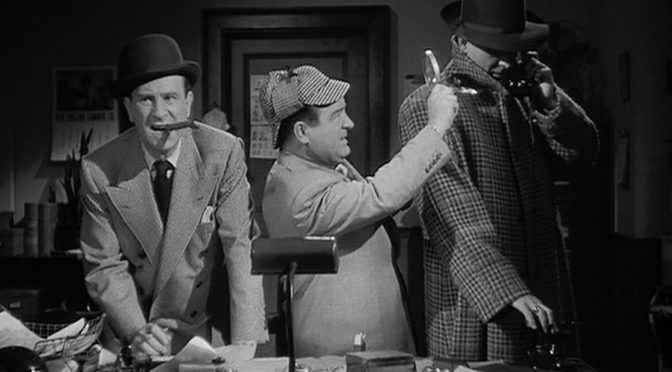
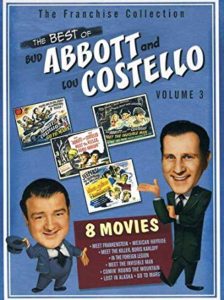
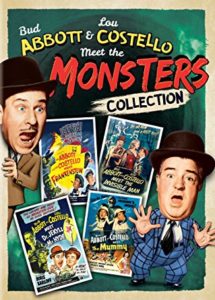
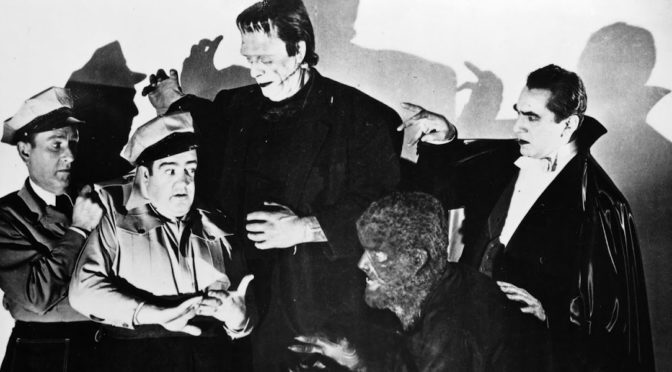
 Nature of Shame:
Nature of Shame:


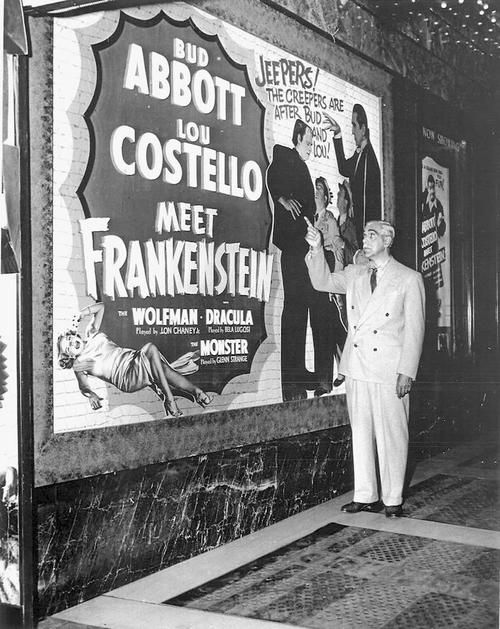

 Universal has given you dozens of opportunities to own Abbott and Costello Meet Frankenstein on Blu-ray and DVD.
Universal has given you dozens of opportunities to own Abbott and Costello Meet Frankenstein on Blu-ray and DVD. 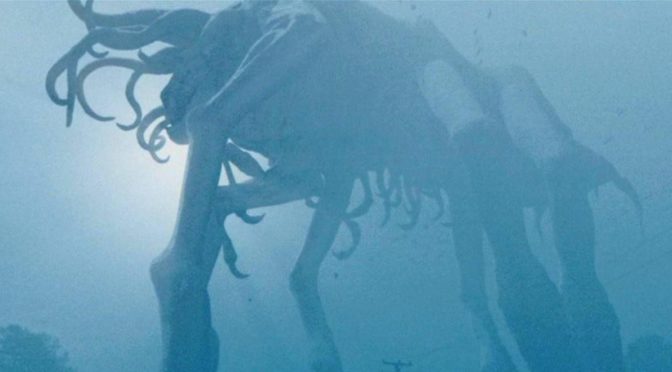
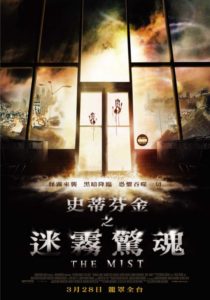 Nature of Shame:
Nature of Shame:
